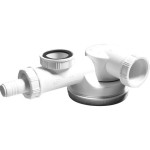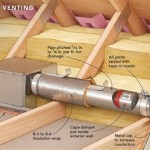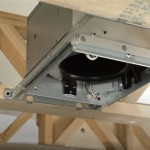Bathroom Sink Drain Won't Stop Leaking: Troubleshooting a Water Tank Leak
A persistent leak from a bathroom sink drain can be a frustrating and wasteful problem. While the sink drain itself may seem like the culprit, the issue can sometimes stem from the attached water tank components. This article will explore potential causes of this type of leak, provide diagnostic steps, and offer potential solutions to help resolve the issue.
It's crucial to understand the interconnectedness of the bathroom sink and its water tank. The sink drain's primary function is to carry wastewater away. However, certain components, like the pivot rod and pop-up assembly, rely on connections to the water tank's overflow system. A leak may indicate a problem with these connections or the overflow system itself.
One common cause of leaks related to the sink drain is a faulty pivot rod. The pivot rod is the vertical metal rod located behind the faucet handle. It's connected to the pop-up assembly, which controls the sink stopper. If the pivot rod is loose, bent, or corroded, it can prevent the pop-up from sealing correctly, leading to leaks around the drain. Additionally, a damaged or deteriorated pivot rod nut can compromise the connection and cause leaks.
Another potential source of leakage is the pop-up assembly itself. This assembly consists of several parts, including the stopper, the clevis strap, and the spring clip. Over time, these components can wear out, become misaligned, or accumulate debris, hindering their ability to create a watertight seal. A worn-out stopper, a loose clevis strap, or a broken spring clip can all contribute to leaks.
The overflow system within the water tank also plays a critical role in preventing leaks. The overflow tube, located inside the tank, directs excess water into the drain if the water level gets too high. If the overflow tube is cracked, loose, or improperly connected, water can leak from the tank into the drain and potentially down the outside of the drainpipe. A leaking overflow tube connection can be a significant source of water loss.
Troubleshooting a leak seemingly originating from the sink drain requires a systematic approach. Begin by visually inspecting the pivot rod, pop-up assembly, and the area around the drain for any obvious signs of damage or looseness. Look for water stains, drips, or signs of corrosion. Check the pivot rod nut for tightness and the pivot rod itself for straightness and proper connection to the pop-up assembly.
Next, examine the pop-up assembly. Remove the stopper and examine it for wear and tear. Check the clevis strap for proper attachment and the spring clip for secure placement. Look for any mineral buildup or debris that might be interfering with the seal. Cleaning these components can sometimes resolve the issue.
Inspecting the overflow system typically requires removing the tank lid. Carefully examine the overflow tube for cracks, damage, or looseness. Ensure it is securely connected to the overflow opening in the tank and the drain. Check the rubber gasket or sealant around the overflow tube connections for signs of deterioration or leakage.
Once the source of the leak is identified, appropriate repairs can be made. A loose pivot rod nut can be tightened, while a damaged or corroded pivot rod may require replacement. Similarly, worn-out or broken components of the pop-up assembly, such as the stopper, clevis strap, or spring clip, can typically be replaced individually or as a complete unit.
Repairing a leaking overflow tube often involves tightening the connections or replacing the rubber gasket or sealant. If the overflow tube itself is cracked or damaged, replacing the entire tube is usually necessary. Ensuring a proper seal around the overflow tube connections is essential to prevent future leaks.
Addressing a leak from the sink drain can sometimes be a simple DIY project. However, if the problem persists or if significant repairs are needed, consulting a qualified plumber is recommended. A plumber has the expertise and tools to diagnose complex plumbing issues and provide effective solutions. Promptly addressing leaks can prevent further damage and conserve water.
Regular maintenance can also help prevent future leaks. Periodically inspecting and cleaning the sink drain, pop-up assembly, and overflow system can help identify potential problems early on. Removing debris and mineral buildup can maintain proper function and prevent wear and tear. Taking proactive steps can contribute to a well-maintained and leak-free plumbing system.

Do You Have A Leaking Bathroom Sink Learn About The Possible Causes Water Line Repair In Lake Worth Tx Benjamin Franklin Plumbing

Common Sink Leaks You Could Probably Fix Yourself

Bathroom Leak Top 5 Causes Waterleak Co

How To Clear A Clogged Drain Reviews By Wirecutter

How To Fix A Bathroom Sink Drain Stopper 4 Easy Solutions
What Is The Best Pipe Repair Tape To Stop Leaks Under A Sink Quora

6 Ways To Fix Clogged Drains Keep Pipes Flowing Freely Horizon Services

How To Replace A Bathroom Sink Drain Hunker

Bathroom Sink Drain Leak Not Sure How To Fix Doityourself Com Community Forums

Bathroom Drain Cleaning Maplewood Plumbing
Related Posts







